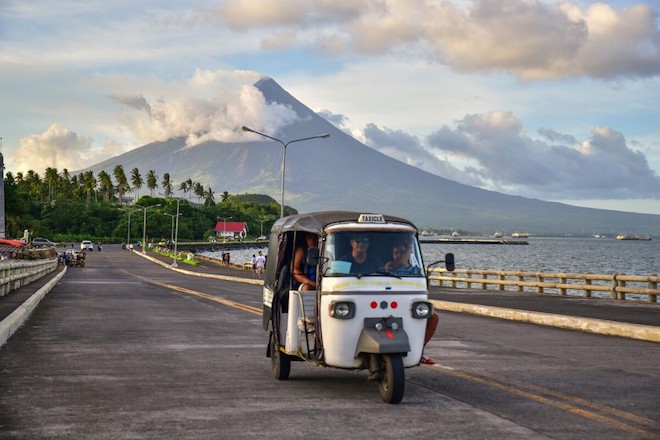
The Philippines is revving up the domestic electric vehicle market and industry to boost EV adoption.
In January, the government removed tariffs on completely built EVs for 5 years. Aside from tax incentives, it will also give EV owners priority registration and discounts on fees, special license plates, and exemption from traffic volume reduction schemes.
In the meantime, the Department of Energy (DoE) is expected to release the Comprehensive Roadmap for the Electric Vehicle Industry (CREVI) in the first quarter, which will provide a charging infrastructure and incentives to support the shift to EVs from fossil-fueled vehicles.
The Department of Trade and Industry already has an EV manufacturing road map. It also offers incentives to promote investments in this industry, including VAT exemption for manufacturing materials and equipment.
Decarbonizing the transport sector, which is a major contributor of greenhouse gas emissions, is part of the country’s climate commitments. Road transportation is estimated to account for 80% of the sector’s emissions.
A nascent market
Last year, the energy department estimated that there were about 9,000 EVs and 300 charging stations in the Philippines. Electric tricycles and motorcycles comprise the majority of EVs currently on the road, while electric cars, which are much more expensive than conventional vehicles, make up only 1% of the market.
Issued on 13 January by President Marcos, Executive Order 12 temporarily lifts most favored nation (MFN) tariff rates on electric passenger cars, buses, minibuses, vans, trucks, motorcycles, tricycles, scooters, and bicycles, except the hybrid-type EVs. Taxes on certain EV parts and components will also be lowered to 1% from 5% for 5 years. The government expects more consumers to buy EVs by making them more affordable amid high fuel prices.
Like its Southeast Asian neighbors, the Philippines has huge potential as a market and manufacturing hub for EVs. It is the world’s second biggest supplier of nickel, which is used to make EV battery cells.
Emerging opportunities in the manufacturing sector include not just the production of batteries but also EVs for public transportation. The Department of Transportation’s public utility vehicle modernization program offers jeepney operators the option to shift to e-jeepneys. Meanwhile, some cities, including Davao in Mindanao, has started deploying e-buses.
Creating an EV ecosystem
Aside from the high cost of ownership and maintenance, the lack of public charging infrastructure also holds back road users from going electric. The government is still finalizing the guidelines for the accreditation and registration of EV charging station providers.
Thanks to initiatives of the public and private sectors, EV charging stations are becoming available nationwide.
For example, the Department of Science and Technology (DoST) has developed an EV charging system, called CharM or Charging in Minutes, for commercial use. It can fully charge EVs, including e-trikes and e-jeepneys, in 30 minutes compared with the previous 4 to 6 hours charging. The DoST is deploying CharM to the charging stations being rolled out by SM Supermalls of the SM Group in selected shopping malls nationwide.
The Asian Development Bank (ADB) has provided a $20-million loan to Wyntron, Inc. to make EV charging equipment in the Philippines. The company is part of the Danam Group in the Republic of Korea with interests in telecommunications and navigation research, aerospace, and electronics manufacturing. Wyntron is expanding its production capacity in the Cavite Industrial Park in the south of Manila to manufacture alternating current (AC) EV charger stations for residential and commercial purposes. The stations will be capable of overnight or 4- to 6-hour charging and include the EV charging equipment with bi-directional functionalities that allow a charged car battery to provide power to the home grid through the charger.
The development of a local industry for charging equipment is expected to generate export revenues, upskill workers, and create jobs.
This article was first published by BIMP-EAGA on 8 March 2023.

